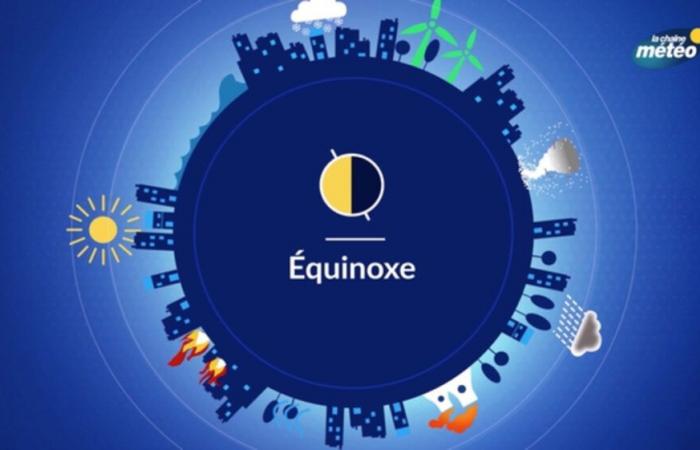The equinox characterizes the moment when the center of the sun is exactly vertical to the equator. The dates of the spring and autumn equinoxes therefore correspond to the days of the year during which these passages at the zenith take place. The first of the year (spring equinox) occurred on Wednesday, March 20, and the second (autumn equinox) occurs on September 22. In this case, the Earth is equally exposed to sunlight on one half while the other is at night. Etymologically, the word equinox is formed from two Latin terms: “aequus” which means “equal” and ” noxnoctis » which means « night ». This word therefore means « equal night »: the duration of the day and the night is everywhere equal to 12 hours.
Why do the dates of the equinoxes vary?
Most of the time, the date of the equinox falls on September 21, but sometimes the equinox occurs on September 22 or even September 23. This year, the equinox falls on September 22 at 2:43 p.m. French time (12:43 p.m. Universal Time) according to the Institute of Celestial Mechanics and Ephemeris Calculation (IMCCE). This shift results from the fact that the Earth orbits the Sun in 365 days, 5 hours and 46 minutes, and not in 365 days exactly. The difference accumulates and the readjustment is made both by adding a February 29 in leap years (every 4 years) and by one to two additional days, in certain years, during the solstice and the equinox.
How are the seasons explained?
Our planet is not perpendicular to the sun: its axis of rotation is tilted by 23.5° and the Earth travels around the sun at an angle (the ecliptic). This explains the variation in the length of day and night over the seasons. If the Earth remained perpendicular to the Sun, the days would remain the same length and the night/day alternation would be permanently equal. Similarly, the distance from the Earth to the Sun is not always the same either: it varies from 147 million to 152 million km, which does not influence the heat received from the Sun, but causes differences in speed and therefore in the length of the seasons. At the time of the Solstices, the declination of the Earth relative to the Sun is maximum (23.5°) and the star of the day is at the zenith of the tropics (of Cancer or Capricorn), while at the equinox, this apparent declination is zero, the Sun being vertical to the equator.
© The Weather Channel
How can we explain the decrease in the number of days?
It is the tilt of the Earth’s axis (the axis passing through the poles) that explains the more or less long exposure to the sun depending on the season. In summer, this tilt favors the exposure of one hemisphere facing the sun. In winter, on the contrary, this tilt reduces this exposure. In spring and fall, the respective exposures of the Southern and Northern hemispheres are balanced. Seen from the Earth’s surface, the course of the sun follows a curve throughout the year that rises until the summer solstice then stagnates for a few days at its highest level in June, before descending to be at its lowest in December at the time of the winter solstice. The longest day corresponds to the longest course of the sun, which then rises in the northeast and sets in the northwest. The shortest day corresponds to the shortest course of the sun.
At the end of September, at the equinox, we lose up to 4 minutes of theoretical sunshine per day. This loss of day length then decreases until the winter solstice on December 21, when we slowly start to gain it back again. Halfway between the longest and shortest day (at the equinoxes), the slope of the curve is steepest.
Why does the equinox influence the tides?
At the time of the equinoxes, the tidal coefficients are the strongest: we also speak of “big equinox tides”. Big tides are linked to the attraction of the Moon and the Sun. When these two stars are aligned with the Earth, the attraction is maximum and the tides rise higher: these are the big tides. Two cases exist: either the Moon is on the same side as the Sun (New Moon), or on the opposite side (Full Moon), the essential thing being the alignment with the Earth. Big tides do not necessarily occur on the day of the equinox, because the Sun, although perfectly perpendicular to the Earth’s axis, is not always also aligned with the Moon. We must wait for this Earth – Moon – Sun alignment for big tides to occur.
Below is a time-lapse video of the equinox seen from space.






